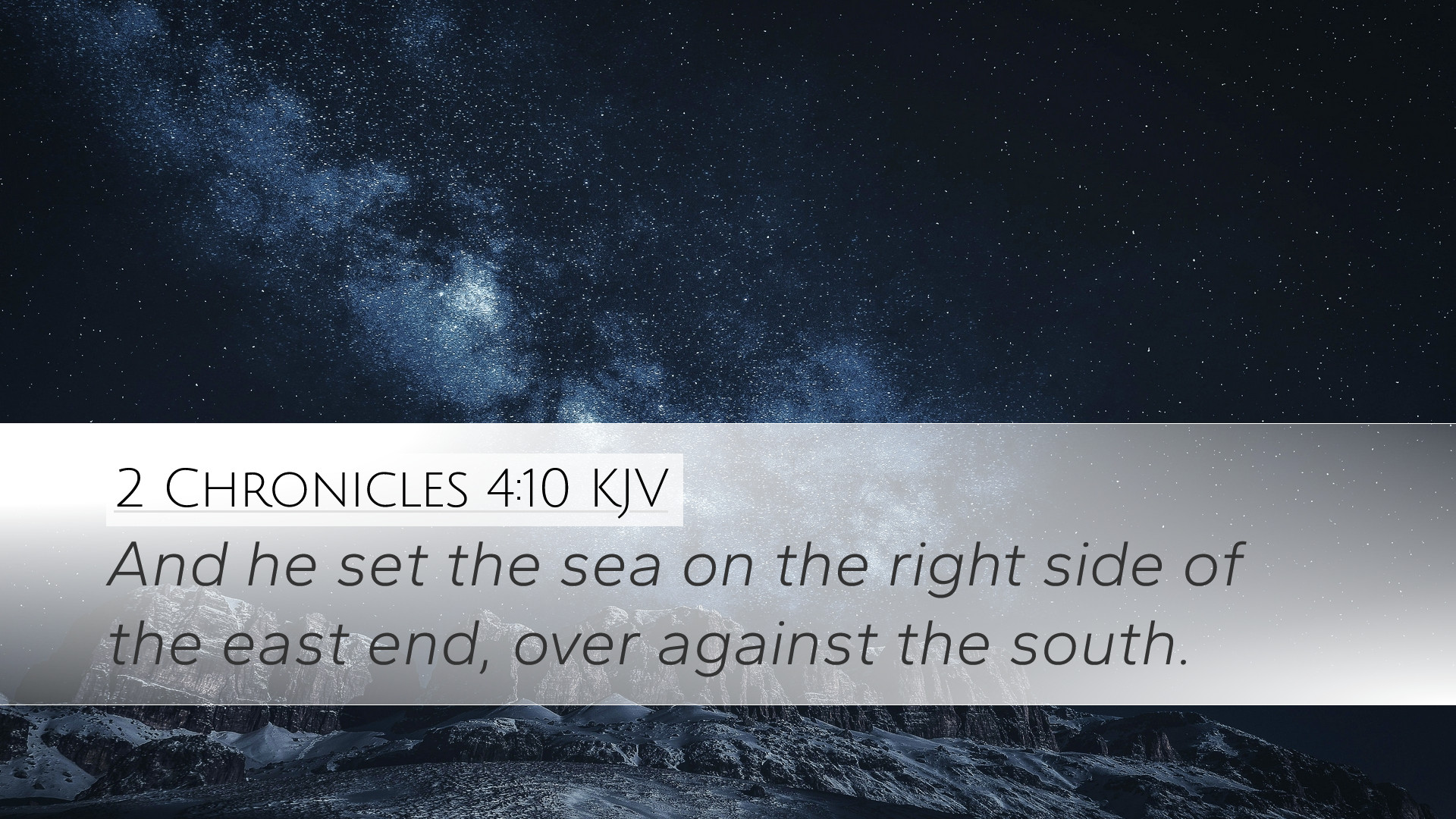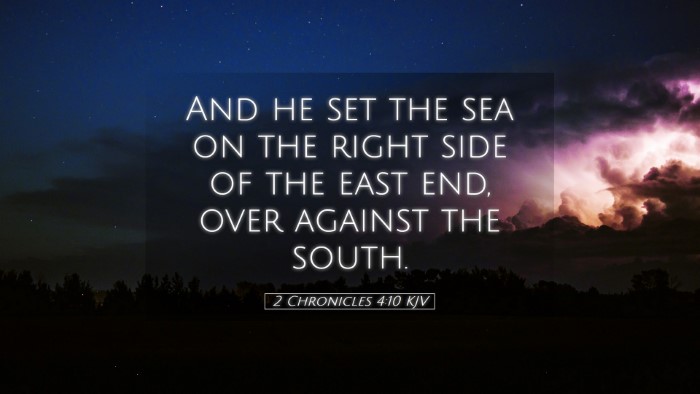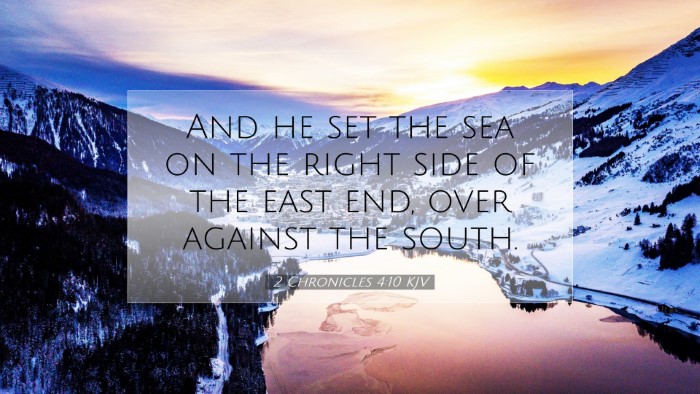Commentary on 2 Chronicles 4:10
2 Chronicles 4:10 states, "And he set the sea on the right side of the east end, over against the south." This verse provides a glimpse into the construction of the Temple of Solomon and the important ritual furnishings required for the service of the Lord.
Contextual Background
The context of 2 Chronicles is critical, as it recounts the reigns of kings in Judah, emphasizing the temple's significance. This verse is part of the description of various instruments and vessels made for worship in the temple, specifically highlighting the "brass sea."
The Significance of the 'Sea'
Matthew Henry observes that the "sea" mentioned here refers to a large basin made of brass, primarily used for the ceremonial washing of the priests to ensure they were clean before performing their duties. It reflects the necessity of purity in approaching God.
- Symbolism of Water: Water often represents cleansing and purity throughout the Scriptures. This 'sea' is a vivid reminder of the cleansing power of God, pointing to the spiritual washing that comes through Christ.
- Positioning: Its placement on the east side signifies a prominent position in the Temple, indicating the importance of purity as a prerequisite to worship.
- Volume and Size: Historical sources describe it as being massive, serving not only as a functional element but also as a display of the grandeur of God's provision for His people.
Interpretative Insights
Albert Barnes, in his commentary, emphasizes that the location of the sea reflects a precise order that was to be followed in the temple's arrangement. The care involved in placing the sea demonstrates the intentionality behind the design of God's worship space.
- Divine Order: This order reflects God's character and His desire for His people to respect and adhere to the protocols He established.
- Holiness in Worship: The eastward orientation is significant as it aligns with the idea of God’s presence, as dwelling in the east is often linked with divine authority and glory.
Theological Implications
Adam Clarke further adds depth by connecting this passage to the themes of redemption and the new covenant. He remarks that the 'sea' foreshadows the spiritual reality fulfilled in Christ, where He provides living water that cleanses us from sin.
- Christ as Our 'Sea': Just as the priests were to wash in the sea, believers today must come to Christ for cleansing (John 7:37-38). This type points toward Jesus as the ultimate source of our sanctification.
- Faith and Repentance: The act of approaching the 'sea' required humility and recognition of one's need for spiritual cleansing, mirroring the call to faith and repentance in the New Testament.
Practical Application
For pastors, students, and theologians studying this verse, several practical applications arise:
- Encouraging Purity: Pastors can emphasize the importance of spiritual purity in worship, echoing the symbolic cleansing represented by the 'sea.'
- Understanding Worship Structures: The organized layout of the temple signifies the importance of order in religious practice, aiding in the cultivation of a respectful worship environment today.
- The Foreshadowing of Christ: When teaching, scholars can highlight how Old Testament practices foreshadow New Testament truths, reinforcing the continuity of God’s plan throughout Scripture.
Conclusion
In conclusion, 2 Chronicles 4:10, while a concise verse, encapsulates profound theological principles related to worship, purity, and the foreshadowing of Christ. Through the combined insights of Matthew Henry, Albert Barnes, and Adam Clarke, we find a rich tapestry of meaning that challenges us today to approach God with reverence, recognizing the glorious provision made available through Christ our Redeemer.


